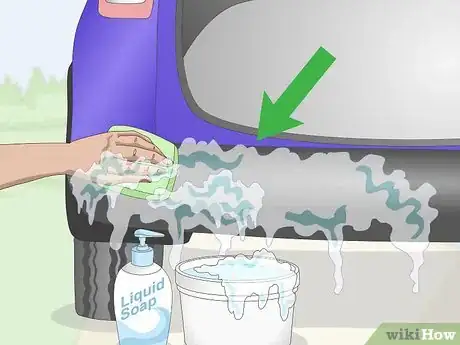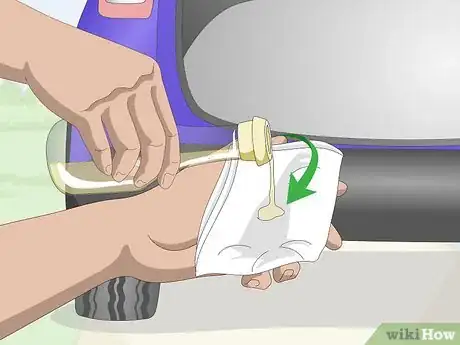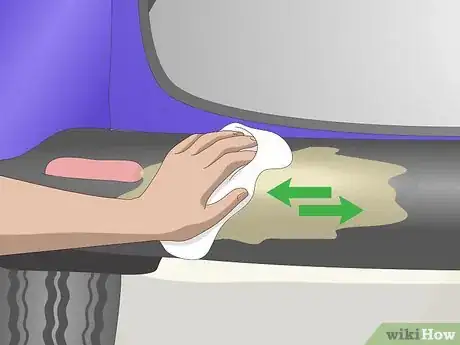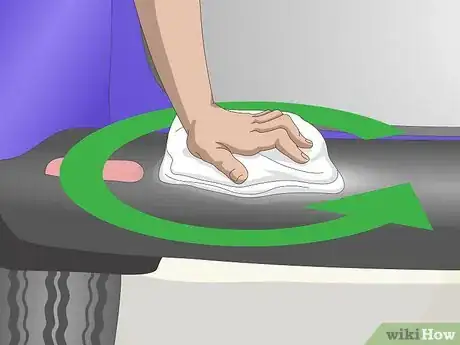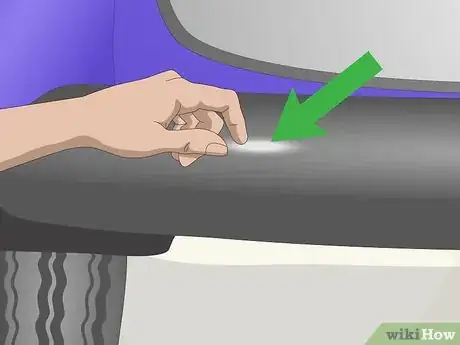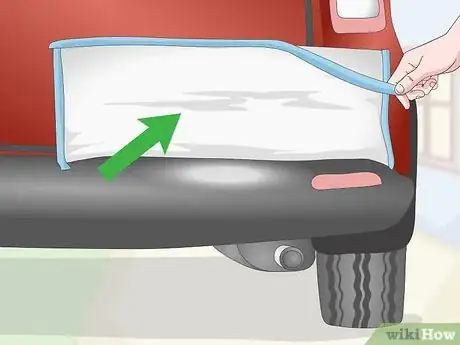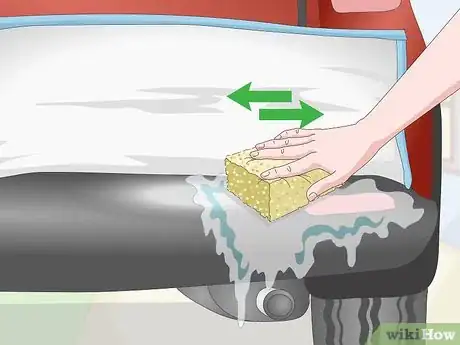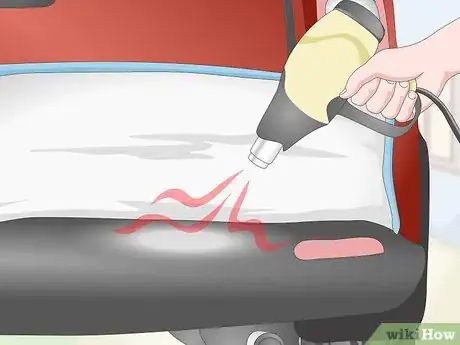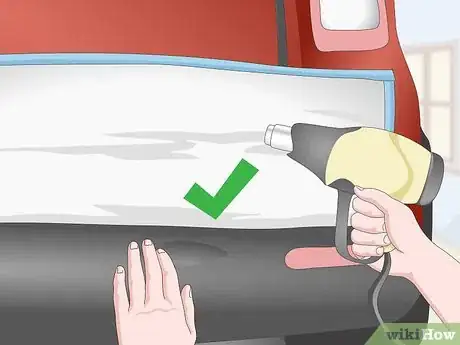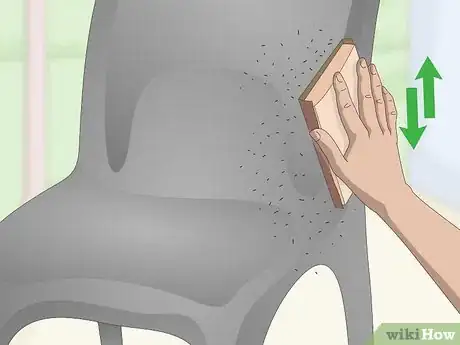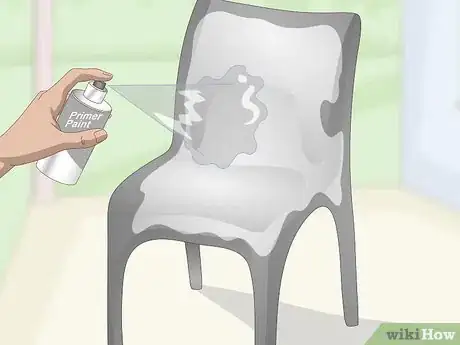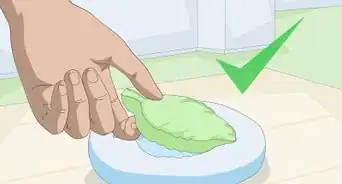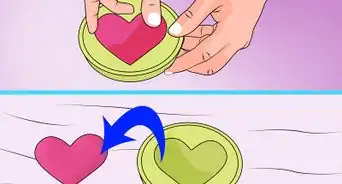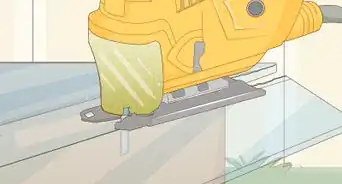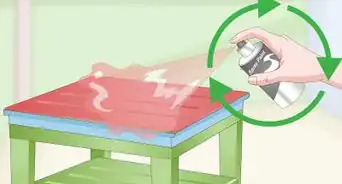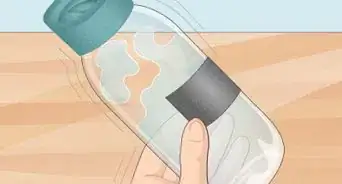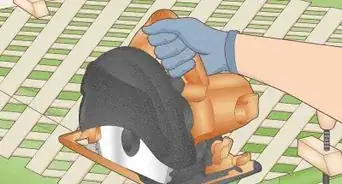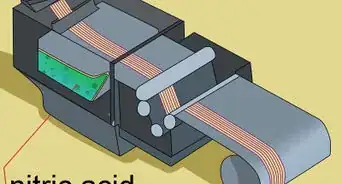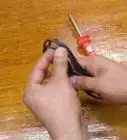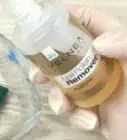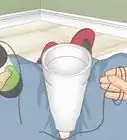This article was co-authored by wikiHow Staff. Our trained team of editors and researchers validate articles for accuracy and comprehensiveness. wikiHow's Content Management Team carefully monitors the work from our editorial staff to ensure that each article is backed by trusted research and meets our high quality standards.
There are 11 references cited in this article, which can be found at the bottom of the page.
This article has been viewed 197,839 times.
Learn more...
Although durable, black plastics (especially car trims and bumpers) are prone to fading and discoloration over time. Luckily, bringing out the plastic's natural luster is easily done. By rubbing olive oil or using a heat gun on the faded area, you can help your plastic look as good as new. And, if all else fails, you can always use black spray paint to give your plastic a sleek shine again.
Steps
Rubbing Oil on Faded Plastic
-
1Wash and dry the plastic's surface. The olive oil will absorb best into a clean surface. If your plastic object is dirty, wash it with soap and warm water. Dry it off with a towel before restoring it to prevent the olive oil from slipping off.
-
2Pour a coin-sized amount of olive oil on a cloth. Olive oil can restore black plastic's natural color, clearing up any faded or discolored areas. Add a small, coin-sized dab of olive oil to a washcloth or paper towel—a little goes a long way, and you can always add more later as needed.[1]
- Baby oil or linseed oil can also work as an alternative.[2]
Advertisement -
3Massage the olive oil into the plastic. Rub the washcloth or paper towel back and forth on the targeted area. Continue rubbing the area for several minutes to help the plastic absorb the olive oil.[3]
- To avoid getting olive oil on nearby objects, cover them with a tarp or towel.
-
4Buff the plastic with a dry cloth. After rubbing the olive oil for a few minutes, take a dry washcloth and wipe the plastic in circular motions. Apply heavy pressure as you do so to get rid of the olive oil grease and give the plastic an extra shine.[4]
- If you can't find another cloth, use the part of the first paper towel or wash cloth that isn't oily.
-
5Inspect the plastic for residual discoloration. When you've removed the olive oil, check the plastic object's color for any remaining damage. If you notice any patches that the olive oil didn't restore, try the process again with more oil while directly targeting the stubborn area.[5]
- For severe fading or discoloration, you may need to spray paint the plastic black.
-
6Try a black plastic trim moisturizer as an alternative. Like olive oil, black plastic moisturizers restore car trims and bumpers by adding moisture to their surface. If you would prefer to use a product made specifically for cars, you can apply most black plastic moisturizers in a similar way that you would olive oil.[6]
- You can buy car trim moisturizers at most automotive stores. Read its specific instructions carefully before applying the object.
- If you are trying to restore black plastic that isn't part of your car, you can still try a moisturizer on your object.
Trying a Heat Gun
-
1Use a heat gun as a temporary solution. Heat guns can bring out the natural oils in black plastic and restore its luster, but this is not a long-lasting solution. The plastic may eventually fade with use and, after several treatments, will no longer have enough natural oils to draw out through heating.[7]
- How long this restoration method lasts depends on how often your car is exposed to direct sunlight. The more often you use you car, the quicker the restoration will fade.
- If you've used a heat gun in the past but the treatment no longer works, try adding olive oil to the plastic's surface to restore its shine.
- You can buy or rent a heat gun online or from some hardware stores.
-
2Cover nearby non-plastic objects with a tarp before using the heat gun. Heat guns can warp or discolor the surfaces of non-plastic items. If your object is attached to something, cover any areas you do not want to heat with a flame-resistant tarp.
- This method is primarily for car trims and bumpers. Do not use this method on black plastic attached to flammable materials (like some plastic toys).
-
3Clean and dry the plastic object. Using a heat gun on dirty plastic can burn in any dirt or stains. Wash the object with soap and water, cleaning away as much debris as possible, and dry it off with a towel before applying heat.[8]
-
4Hold the heat gun several inches away from the surface. Turn on the heat gun and move it in small circles around the discolored plastic. Avoid leaving the heat gun in one place for too long to keep the color treatment even and avoid burning the plastic.[9]
- Test the heat gun on an inconspicuous area first to make sure you like the treated plastic's color.
-
5Tun off the heat gun and inspect the plastic's new color. As you move the heat gun around the plastic, it should change to a darker, richer color. When you've covered the entire surface, turn the heat gun off and check the plastic. If you're happy with the new color, you have finished restoring the object.
- If your plastic still looks faded or discolored, try applying olive oil or painting the object instead.
Painting Over Black Plastic
-
1Wash the plastic object with soap and water. The paint will stick best to a smooth, dirt-free surface. Dip a washcloth in soap and warm water and clean any dust or debris from the plastic's surface.
- For a thorough cleaning or to remove stubborn dirt, immerse the object in water instead.[10]
- Dry the object off with a cloth before painting it.
-
2Sand the surface with a 220-grit sanding block. Sanding provides texture to help the paint stick. Rub the fine-grit sanding block with firm pressure over the plastic's surface. When you're finished sanding, wipe away any dust with a dry brush.[11]
- If you don't have a dry brush, a paint brush works as an alternative.
-
3Apply a coat of primer to help the paint stick. Spray a coat of paint primer over the object's surface. Avoid spraying one area for too long to keep the coat even and light. Let the primer dry for the time recommended on the packaging, which should be between 30 minutes to an hour.[12]
- You can buy plastic primer online or from most craft stores.
- Thin primer coats are ideal because heavy or multiple coats can change the object's texture.
-
4Spray a coat of black spray paint on the plastic. Hold the nozzle about 12–18 inches (30–46 cm) away from the surface and move the can in smooth strokes over the object. Continue spraying the paint in overlapping strokes until you cover the entire surface.[13]
- Apply 3-4 coats to strengthen the paint's color, waiting for it to dry in-between coats.
- Each coat should take about 30-60 minutes to dry—check the paint's packaging for a specific time.
-
5Protect the newly-applied paint with a clear primer. After the last paint coat dries, spray the entire surface with a clear paint primer. This will prevent the paint from fading, discoloring, or chipping over time.[14]
- Paint primer is especially important if you will use your object outside, where it will be subject to the elements.
Things You'll Need
Rubbing Oil on Faded Plastic
- Wash cloth or paper towel
- Olive oil
Trying a Heat Gun
- Heat gun
- Flame-resistant tarp
- Water
- Soap
- Towel
Painting Over Black Plastic
- Soap
- Water
- Wash cloth
- 220-grit sandpaper
- Plastic primer
- Black spray paint
- Clear spray primer
References
- ↑ https://www.youtube.com/watch?v=vkgBapTdg2s&feature=youtu.be&t=62
- ↑ https://www.carthrottle.com/post/4-ways-to-restore-faded-black-plastic-trim/
- ↑ https://www.youtube.com/watch?v=vkgBapTdg2s&feature=youtu.be&t=73
- ↑ https://www.youtube.com/watch?v=vkgBapTdg2s&feature=youtu.be&t=97
- ↑ https://www.youtube.com/watch?v=vkgBapTdg2s&feature=youtu.be&t=115
- ↑ https://www.carthrottle.com/post/4-ways-to-restore-faded-black-plastic-trim/
- ↑ https://www.carthrottle.com/post/4-ways-to-restore-faded-black-plastic-trim/
- ↑ https://www.youtube.com/watch?v=PQs2ik1dzzE&feature=youtu.be&t=68
- ↑ https://www.youtube.com/watch?v=PQs2ik1dzzE&feature=youtu.be&t=77
- ↑ https://www.carthrottle.com/post/4-ways-to-restore-faded-black-plastic-trim/
- ↑ https://craftsbyamanda.com/tips-for-painting-on-plastic/
- ↑ https://www.thecreativityexchange.com/2012/03/how-to-spray-paint-plastic-plastic-crate-revamp.html
- ↑ https://www.bobvila.com/articles/how-to-paint-plastic/
- ↑ https://www.apartmenttherapy.com/how-to-spray-paint-plastic-the-right-way-244430
About This Article
To restore black plastic, start by washing and drying it if it’s dirty, which will help it absorb the oil that will restore its natural color. Once it’s dry, rub a coin-sized amount of olive oil into the plastic using a washcloth or paper towel. After rubbing the plastic for a few minutes, buff it with a dry cloth to remove any leftover oil. If this doesn’t restore your black plastic, spray it with black paint to give it a new coat. Make sure you use a primer first to help the paint stick. When the paint’s dry, spray on a coat of clear primer to protect your new paint from fading and chipping. For more tips, including how to temporarily restore black plastic using a heat gun, read on!
